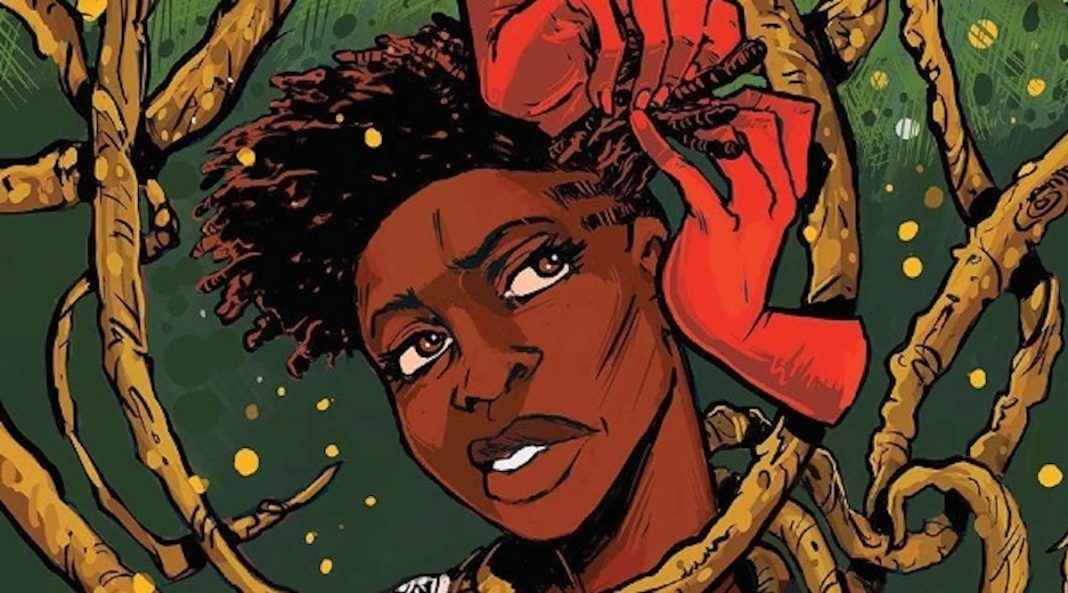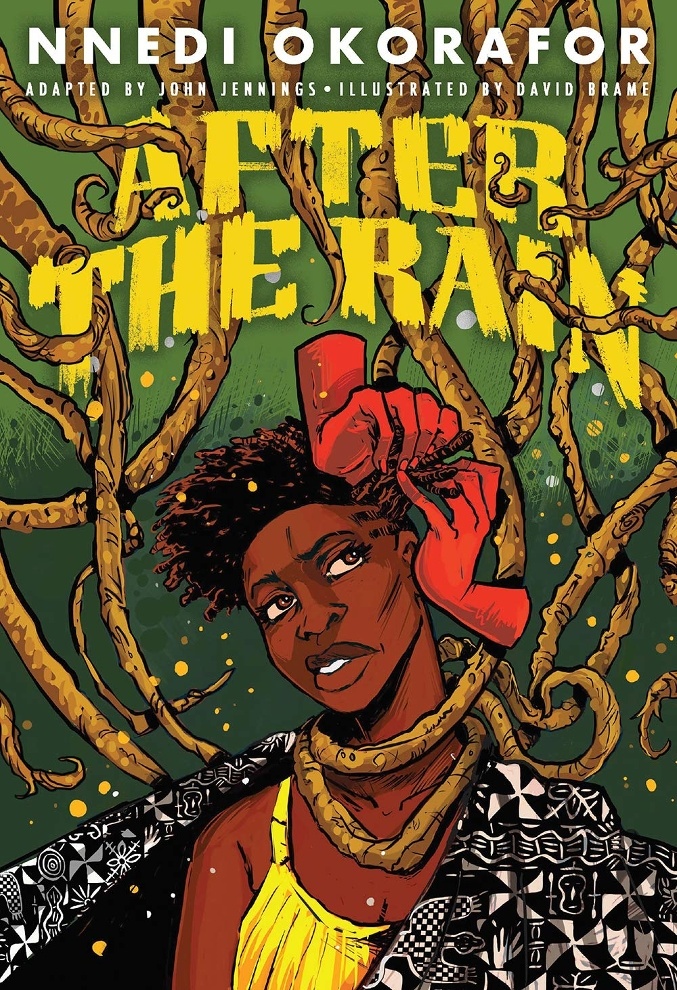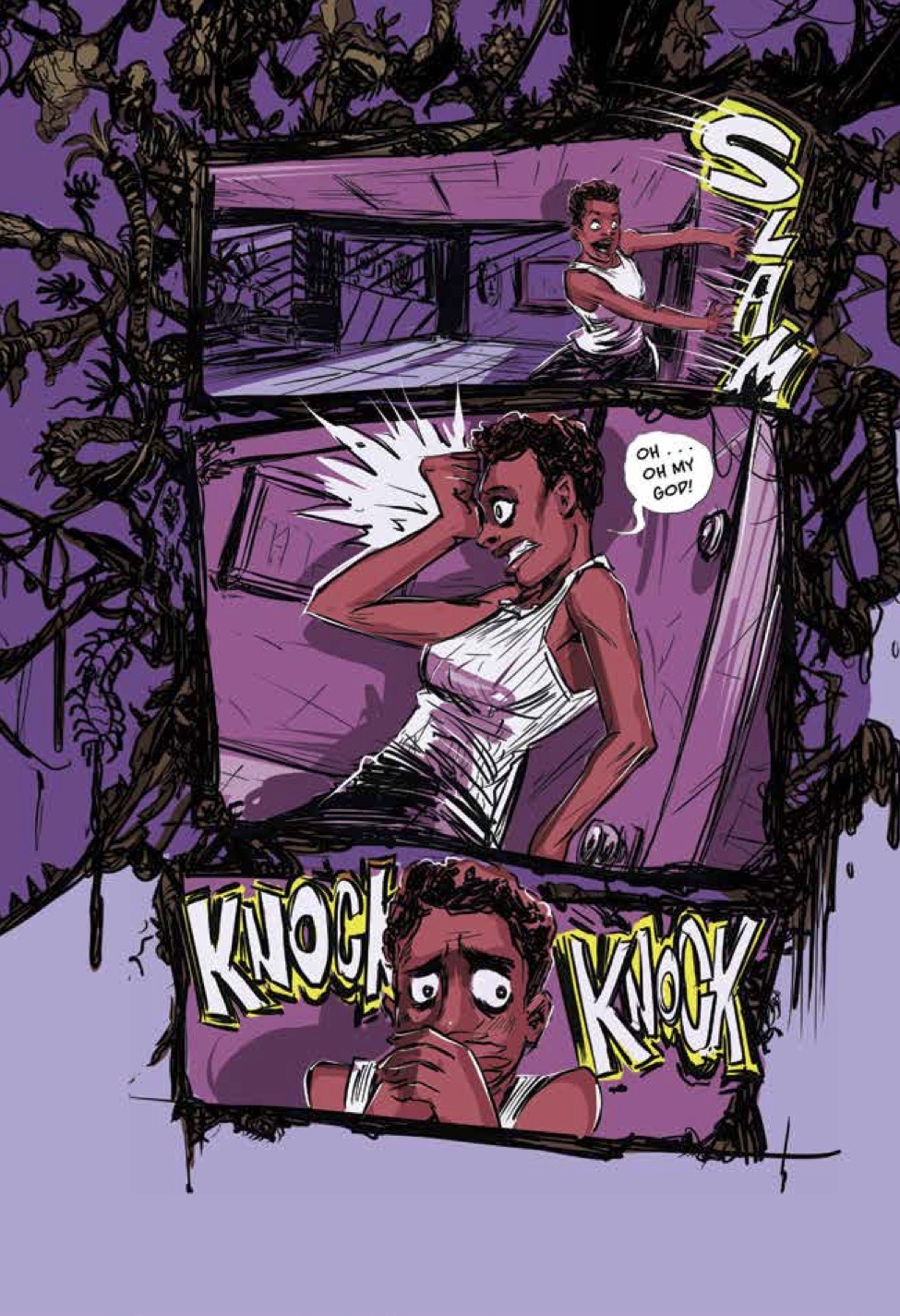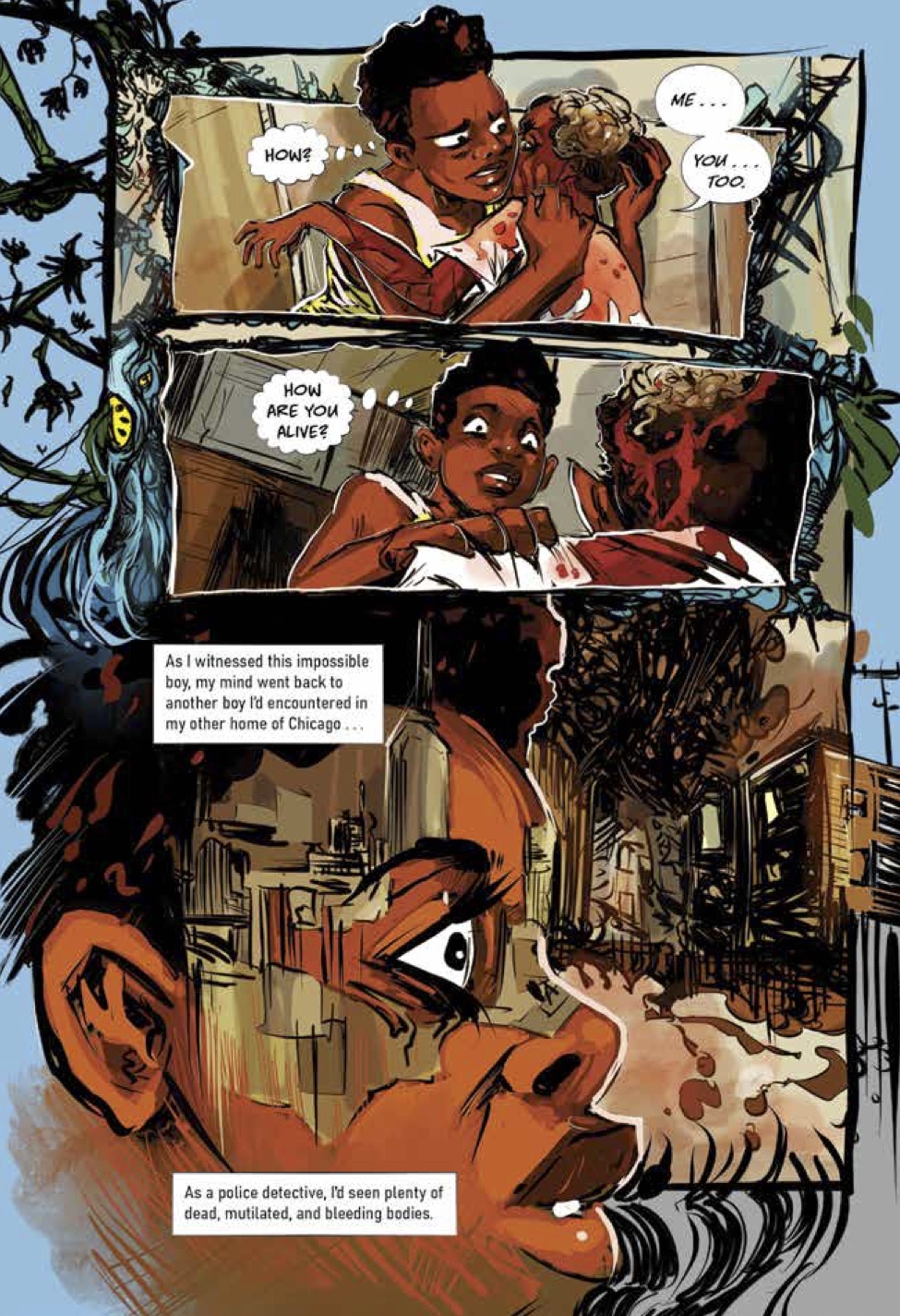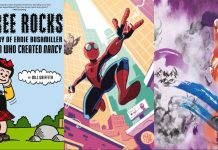After The Rain
Written by Nnedi Okorafor and John Jennings
Illustrated by David Brame
Abrams Megascope
The first title in the much-anticipated Megascope imprint from Abrams Comics Arts, After The Rain, is in many ways a herald for Megascope’s larger focus and mission, and the writer who adapted Nnedi Okorafor’s short story into comics form, John Jennings, is the obvious choice to script the book that plays that role. He’s the curator of the line, of course, but he’s also the artist on two graphic novels that directly led to its existence, the excellent Octavia Butler adaptations of Kindred and Parable of the Sower. If Jenning’s efforts are the reason Megascope exists, then it’s only natural that he gets first dibs on laying out what exactly Megascope is.
After The Rain is, in many ways, a spiritual cousin of Jennings’ previous adaptations. In all three, Black women are faced with a journey that forces them to directly contend with the historical-based struggles that they must face in order to grow, evolve, find meaning or peace, or even solutions and strength. They present science fiction, fantasy, or horror as arenas for examination.
In terms of After The Rain, it means we follow Chioma, a Nigerian American woman visiting her family in Nigeria while her mind looms on past trauma in her home in Chicago, where she works as a cop. These specters infect her mind and have a direct influence on how she approaches current incidents, as when noises outside cause her to investigate and stand face to face with an inexplicable presence that horrifies and haunts her.
As Chioma seeks answers, she begins to feel as though something is being kept from her as her grandmother and grand aunt whisper cryptic words to each other, and interaction with people at the local market elicit the same kind of mysterious statements. What exactly is she missing?
When Chioma begins to find answers, reality erupts into something as inexplicable as what she witnessed that night outside her grandmother’s house, and even more nightmarish. Mixing the sheer psychological terror that anyone would become consumed by with specific imagery grounded in Nigerian culture, Chioma is forced to look directly at her own trauma and the wider versions that lurk around her family’s home and the world they live in, where ancient views are revealed to have modern relevance in regard to a person’s emotional experience as part of the universe. Looking at oneself as part of a psychological continuum rather than an isolated gaping wound may be the first step to healing.
As illustrated by David Brame, After The Rain unfolds like some surreal Lovecraftian nightmare, where the impossible takes form and the ancient proves tangible and dangerous, goading victims into a level of terror that it goes beyond endurance and understanding, to an extreme that no one could possibly return from as the same person. Pain and suffering become interchangeable with healing and growing — like life and death, coexistent.
After The Rain is an intense realization of Okorafor’s short story and uses the horror elements to thematic effect in a visceral and important way, and as a statement of intention for what will follow at Megascope, it hints at exciting work to come.


